INSTRUCTIONS TO CANDIDATES:
- Write your Name and Index Number in the spaces provided above.
- Sign and write the date of examination in the spaces provided above.
- This paper consists two sections A and B.
- Answer all questions in Section A and B in the spaces provided below all questions.
- All working MUST be clearly shown.
- Non-programmable silent electronic calculators and KNEC Mathematical tables may be used.
Take g = 10Nkg-1
FOR EXAMINER’S USE ONLY
|
SECTION |
QUESTION |
MAX. SCORE |
CANDIDATE SCORE |
|
A |
1 - 13 |
25 |
|
|
B |
14 |
10 |
|
|
15 |
10 |
||
|
16 |
07 |
||
|
17 |
10 |
||
|
18 |
09 |
||
|
19 |
09 |
||
|
TOTAL SCORE |
80 |
|
|

QUESTIONS
SECTION A (25 MARKS)
Answer ALL questions in this section in the spaces provided
- The figure 1 shows a wire in a magnetic field. A current is switched on to flow through the wire in the direction shown. State the direction of motion of the wire. (1mk)
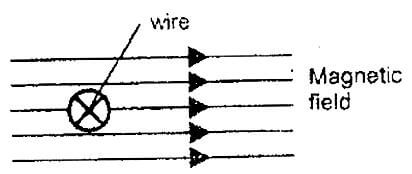
Fig.1 - In a textile industry, the machines experience electrostatics forces at certain points. Suggest one method of reducing these forces. (1mk)
- When the device X is connected in the circuit below, the voltage across it is 0.14V.
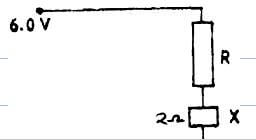
Fig. 2
Calculate the value of the resistance R. (2mks) - Four bars of metal W, X, Y and Z are tested for magnetism. X attracts both W and Y but not Z. Z does not attract W, X or Y. W and Y sometime attract one another and sometimes repel one another. What conclusion can you draw about? (2mks)
- Bar W
- Bar X
-
- An observer watching a fireworks displays sees the light from an explosion and hears the sound 4 seconds later. How far was the explosion from the observer? (Speed of sound in air 330m/s). (3mks)
- A vertical object is placed at the focal point F of a diverging lens as shown in figure 3.
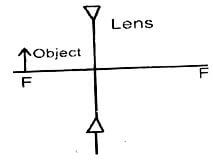
Fig. 3
Sketch a ray diagram to show the image of the object. (2mks)
- If the focal length of the lens above is 10cm. Calculate its power. (2mks)
- At what part of the cathode ray tube would the time base be connected? (1mk)
- A heater of resistance R1 is rated P watts, V volts while another of resistance R2 is rated 2P WATTS, V/2 volts. Determine R1/R2. (2mks)
- The figure below shows an experimental arrangement. S1 and S2 are narrow slits.
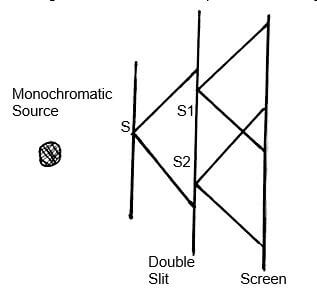
Fig. 4
State what is observed on the screen when the source is: (3mks)- Monochromatic
- White light
Use the diagram below to answer question 10.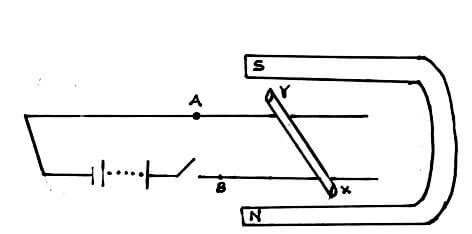
Fig. 5
- An un-insulated copper wire XY lies over the fixed wire A and B connected to a battery. When the key in the circuit is closed, the rod XY moves. In which direction does the wire XY experience the force? (Indicate using an arrow) (1mk)
- When is the force on the wire XY greatest? (1mk)
- State and explain the effect of reducing the EHT in an X-ray tube on the X-rays produced.(1mk)
- The graph below shows the variation of capacitance of a capacitor with voltage supplied across it.
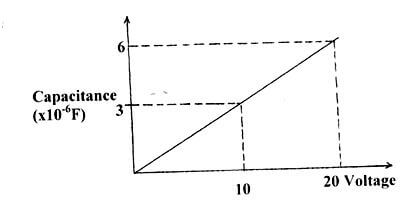
Fig. 6
Use the graph to determine the quantity of charge stored in the capacitor. (3mks)
SECTION B (55 MARKS)
Answer ALL questions in this section in the spaces provided
-
-
- State the meaning of the statement diode characteristic. (1mk)
- Sketch a circuit diagram that can be used to investigate p-n junction diode characteristics. (2mks)
- Define the term acceptor atom as applied in semiconductor. (1mk)
- Study figure 7 below and use it to answer questions that follow.
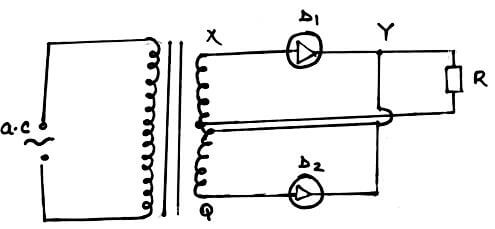
- Briefly explain how the circuit works to produce a rectified alternating current.(3mks)
- Draw on the diagram to show the position of the capacitor. (1mk)
- State the functions of the capacitor in the circuit. (1mk)
- Sketch the graph of the output as seen on a CRO screen. (1mk)
-
-
- Figure 8 below shows an experimental set up in a vacuum for investigating the effect of a magnetic field on the radiation emitted by a radio-active source.
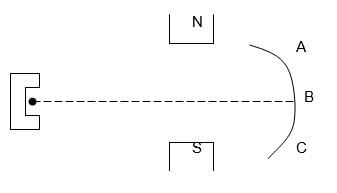
Fig. 8
The background radiation at the place is 5 counts per minute. The detectors are placed a positions A, B and C respectively. Results obtained are shown in the table below.
Use the table to explain which of the three types of radiations are emitted from the source.(2mks)Positions
A
B
C
Counts / min
480
5
400
- Figure 9 below shows the features of a Geiger-Muller (G.M) Tube used for detecting radiation.
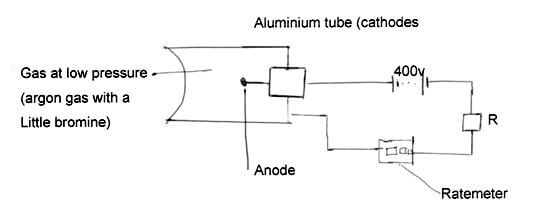
Fig. 9- State the use of Argon gas and Bromine. (1mk)
Argon gas
Bromine - Explain how radiation from the source is detected by the tube. (4mks)
- State one use of radio activity in medicine. (1mk)
- State the use of Argon gas and Bromine. (1mk)
- The box contains names of seven parts of electromagnetic spedrium.
Radio waves
Microwaves
Infra-red
Visible light
Ultra violet
X-rays
Gamma rays
- State the order in which they have been written. (1mk)
- The parts are all transverse waves. State one other property which they all have in common. (1mk)
- Figure 8 below shows an experimental set up in a vacuum for investigating the effect of a magnetic field on the radiation emitted by a radio-active source.
- A photocell has a cathode made of caesium metal when a monochromatic radiation is shone on the cathode photoelectrons are emitted. A graph of kinetic energy against frequency is drawn as shown in figure 10.
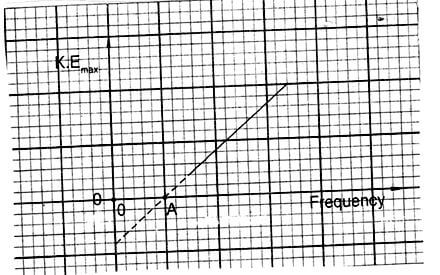
Fig. 10- Use the graph to answer the questions below.
- What is the unit of the slope? (1mk)
- What physical quantity is represented by point A? (1mk)
- Lithium metal has a higher work function than caesium. On the same axes, sketch the graph of lithium. (1mk)
- What does the term Monochromatic mean? (1mk)
- The maximum Kinetic energy of the electrons emitted from a metallic surface is 1.6 x 10-19J when the incident radiation is 7.5 x 1014Hz. Calculate the minimum frequency of radiation for which electrons will be emitted.
(A planck’s constant = 6.6 x 10-34Js) (3mks)
- Use the graph to answer the questions below.
-
- Refraction is the bending of light as it travels from one media to another. State the cause of the bending. (1mk)
- The figure 11 below shows two adjacent solids of materials Diamond and Ruby.
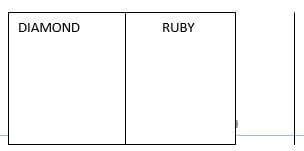 Wide Screen
Wide Screen
Fig. 11
The refractive index of Diamond is 2.4 and that of Ruby is 1.75.- Find the refractive index of Ruby with respect to diamond. (3mks)
- Draw an accurate ray from diamond such that no light is incident on the screen.(3mks)
- The figure 12 below shows white light incident on a rain drop.
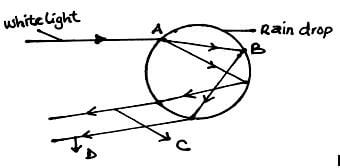
Fig. 12- State what happens at A and B. (1mk)
- State the colour of rays C and D. (2mks)
-
- The figure 13 shows shadow formation using an extended source of light.
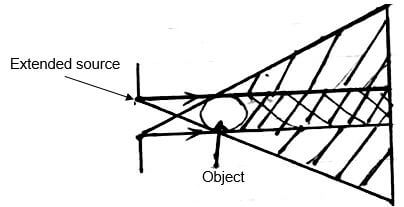
Fig. 13
State the effect on the umbra as the object is moved away from the screen when:- Diameter of the hole is the same as the diameter of the object. (1mk)
- The diameter of the object is smaller than the diameter of the hole. (1mk)
- The diameter of the object is greater than the diameter of the hole. (1mk)
- The figure 14 shows an object infront of a plane mirror. Complete the diagram to show the location of the image,
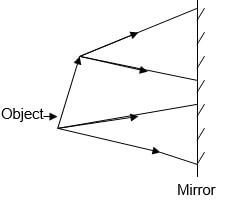
Fig. 14 - The graph below shows an object O placed in front of a concave mirror of focal length 30cm.
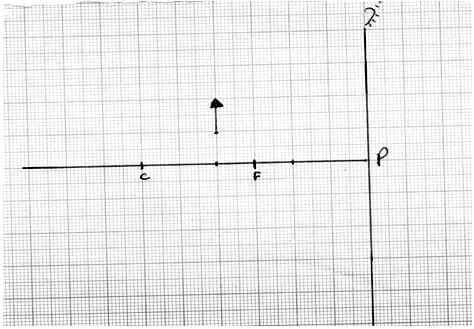
Construct ray diagrams to show the position of the object. (3mks) - Give one feature that makes Parabolic Mirrors suitable for use as car head lights.(1mk)
- The figure 13 shows shadow formation using an extended source of light.
-
- Appliances which draw current from a ring’s main circuit have a third cable connected to the earth. Give a reason why? (1mk)
- In a lighting circuit the wires used are relatively thinner than those of a cooker circuit. Give an explanation for this. (1mk)
- A transformer with 6000 turns in the primary circuit and 300 turns in the secondary circuit has its primary circuit connected to a 400V a.c. source. A heater connected to the secondary circuit produces heat at the rate of 600W. Assuming that the transformer is 100% efficient determine:-
- The voltage in the secondary circuit. (3mks)
- The current in the primary circuit. (2mks)
- The current in the secondary circuit. (2mks)

MARKING SCHEME
-
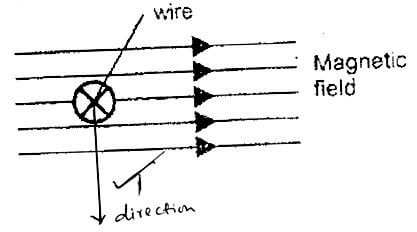
- Earthing machines using spikes.
- P.d across R = 6 – 0.14
I = 0.14 = 0.07Amps
2
R = V = 6 – 0.14
I 0.07
= 83.71Ω -
- Permanent magnet.
- Magnetic material.
-
- Distance = speed x time
= 330 x 4
= 1320m -
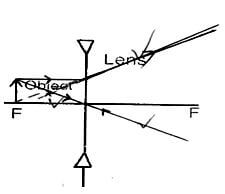
- Distance = speed x time
- P = 1 = 1 = -10 Diopters
F -0.1 - X – Plates
-

-
- Fringes of light
- Central white fringe and fringes of different colours on either side of the central fringe.
- To the right
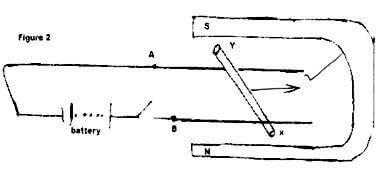
- When the wire is positioned at right angles to the magnetic field.
- Soft x-rays are produced because lower EHT results in slowly moving electrons hence low energy electrons.
- Q = CV
The area under the graph gives the energy stored in the capacitor.
Area = 6 x 10-6 x 20
= 1.2 x 10-4J -
-
- A graph of current against voltage,
-
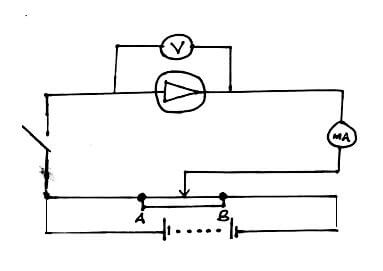
- The atoms that introduce holes in the pure semiconductors.
-
- - During the first half cycle D1 is forward biased while D2 is reverse biased.
- The path taken by current is D1, Y R Z.
- During the next half-cycle D2 is forward biased while D1 is reverse biased and the path of the current is Q D2 Y R Z.
- During both cycles, current flows through the resistor in the same direction. -
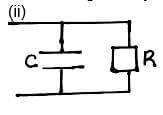
- Smoothen the output signal.
-

- - During the first half cycle D1 is forward biased while D2 is reverse biased.
-
-
- Position A - Alpha – heavy, less deflected in the field.
B - Gamma – no deflection just a ray
C - Beta – lighter, deflected more in the field. -
- Argon gas – ionized by the radiation.
Bromine – quenching agent. -
- When a radioactive substance is placed in front of the window, the emitted radiations enter the tube through the window and ionize the argon gas.
- The negative ions move towards the anode while the positive ions move towards the cathode.
- As ions accelerate, they collide with more particles on their paths, resulting in further ionization (Avalanche of electrons).
- A pulse current flow. A corresponding pulse voltage is registered across the resistor R.
- These currents can be amplified and if passed through a loudspeaker, clicks are heard – or a rate meter.
-
- Used to monitor the function of thyroid gland.
- Used to trace blood clots.
- Used to kill harmful tissues such as cancerous cells.
- Argon gas – ionized by the radiation.
-
- Increasing wavelength / reducing frequency.
- Travel at the speed of light c.
- Position A - Alpha – heavy, less deflected in the field.
-
-
- Joules second (Js)
- Thresh-hold frequency
- See graph
- Radiation with simple wavelength.
- K.E = hf – hfo
= 1.6 x 10-19 = 6.6 x 10-34 x 7.5 x 1014 – 6.6x10-34fo
6.6 x 10-34 fo = 3.35 x 10-19
6.6 x 10-34 6.6 x 10-34
fo = 5.0758 x 1014Hz.
-
-
- Change in velocity.
-
- dηR = dηa . aηR OR
1 x 1.75 dηR = ηR
2.4 η1
= 0.729167 = 1.75 = 0.7292
2.4 - Rηd = Rηa . aηd
1 x 2.4
1.75
= 1.371
Rηd = 1
Sin c
Sin c = 1
Rηd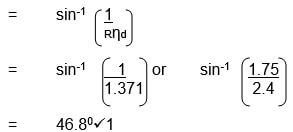
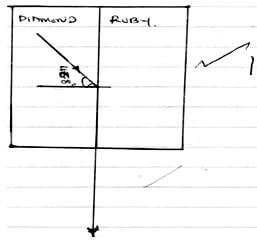
- dηR = dηa . aηR OR
-
- At A light undergoes refraction. ½
At B light undergoes total internal refraction. ½ - C - Violet 1
D – Red 1
- At A light undergoes refraction. ½
-
-
- The umbra remains the same.
- The umbra becomes smaller.
- The umbra becomes greater.
-
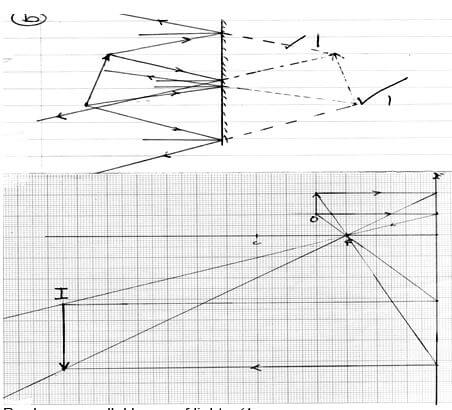
Produces parallel beam of light.
-
-
- To earth the device to avoid electrocution.
- Lighting circuit draws a smaller current than cooker circuit.
-
- VP = NP
VS NS
VS = VPNS
NP
= 400 x 300
6000
= 20V - Power input = Power output
600W = IP x 400V
IP = 600
400
= 1.5A - P = ISPS IS = 600
600 = IS x 20 20
= 30A
- VP = NP
Download Physics P2 Questions and Answers - Mangu High School Trial Mock Exams 2021/2022.
Tap Here to Download for 50/-
Get on WhatsApp for 50/-
Why download?
- ✔ To read offline at any time.
- ✔ To Print at your convenience
- ✔ Share Easily with Friends / Students

